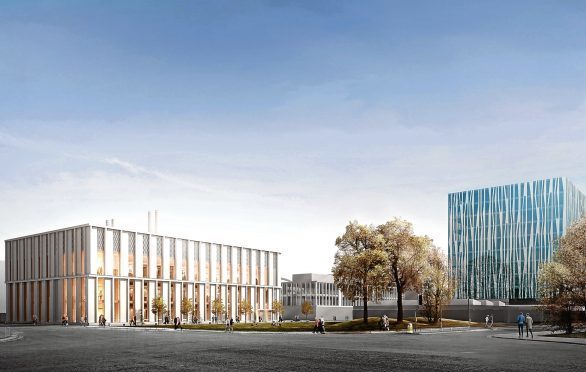Aberdeen University has revised its plans for a £35 million science centre to let passersby glimpse the “world-leading” experiments taking place inside.
Giant windows will be installed in the hopes of stimulating a greater interest in science, technology and engineering.
When a planning application for the new building was lodged late last year, it was accompanied by hopes that the modern facilities on offer would encourage more young people into studying the subjects.
And the university’s assistant estates director, Alan Wight, said the fresh amendments to the blueprint proposed have been made with that motive firmly in mind.
He said: “We want to get the public more interested in science, technology, engineering and mathematics.
“The wish here is to make the work going on in the building more visible on the ground floor so that people can see the activities in those laboratories.
“We are opening up the windows to a greater extent than originally envisaged.”
As well as enlarging the windows, the width of the atrium will be expanded to allow for more group working.
During a meeting of Old Aberdeen Community Council, Mr Wight explained the move had been undertaken following discussions with students about the centre’s design.
He added: “Things are changing all the time in education and students are now being driven more towards working in groups.
“That is becoming more ingrained in the curriculum and we need to adapt to that.
“We are looking now at an opportunity to create more space where students can proactively go and work in groups.”
Mr Wight said he was hopeful that the changes would not delay the application process.
The university is eager to have work on the science centre begin early next year.
The multi-million pound venue, close to the Fraser Noble building and Sir Duncan Rice Library, is intended to “transform the science learning experience” at Aberdeen University.
It will provide the main teaching laboratories for students studying chemistry, physiology, biomedical sciences, geosciences and biological sciences.
If plans are approved, the university hopes that it will be available for teaching in 2021.
